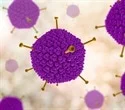The so-called CRISPR-Cas9 system (also known as “gene scissors”) can greatly lower the proliferation of potentially dangerous adenoviruses in human cells in cell culture. This approach, which is employed globally in science and research, thus has the potential to lead to cutting-edge medicines in the future for the treatment of viral infections. This conclusion is based on research from the renowned journal “Molecular Therapy Nucleic Acids,” which was recently published by the IMC Krems – University of Applied Sciences (IMC Krems) in Austria. The Austrian Science Fund FWF provided funding for the study.
Finding the cause of viral illnesses continues to be quite difficult. Despite isolated medications that stop virus replication in human cells, these are still a significant exception. In light of this, members of the research group led by Prof. Reinhard Klein from the Department of Life Sciences at IMC Krems have now investigated the potential of molecular technologies to inhibit viral infections. The research group used a scientifically established method (CRISPR-Cas9) for the targeted modification of DNA to significantly reduce the replication of adenoviruses in human cell lines in cell culture.
This Nobel prize honored method allows DNA segments in mammalian cells to be altered in a highly controlled way. “Our consideration now,” explains Prof. Klein, “was to explore the potential of this technique for combating viral infections, such as infections with adenoviruses, which frequently cause diseases of the respiratory tract, the digestive tract and the eyes.” The goal here: to destroy a region of adenovirus DNA in infected human cell lines in such a way that the viruses can no longer reproduce.
An approach that was surprisingly successful, as Prof. Klein explains: “In fact, we succeeded in reducing the amount of infectious virus particles in the human cell lines by up to three orders of magnitude under certain conditions. A result that clearly confirms the efficiency of the method and further demonstrates that this technology is also potent enough to take on the large number of viruses produced in infected cells in the course of some viral infections.”





